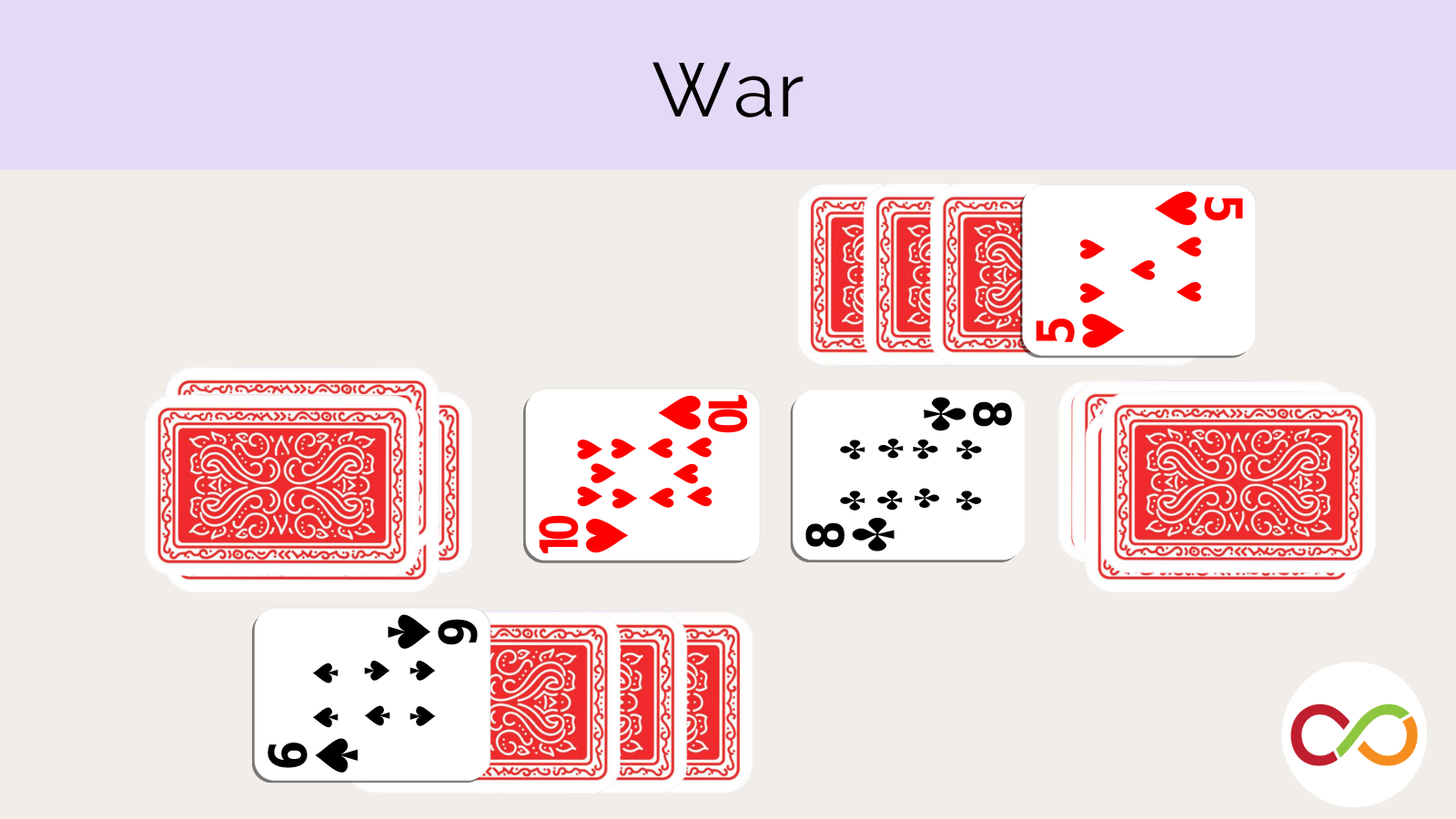Multiplication Mania
Age group
- Primary (Age 6 to 9)
- Junior/Intermediate (Age 9 to 12)
Curriculum Goal
Primary: Number Sense
- Recall and demonstrate multiplication facts of 2, 5, and 10, and related division facts.
- Sort and identify two dimensional shapes by comparing number of sides, side lengths, angles, and number of lines of symmetry.
Junior: Number Sense
- Recall and demonstrate multiplication facts from 0 × 0 to 12 × 12, and related division facts.
- Identify geometric properties of rectangles, including the number of right angles, parallel and perpendicular sides, and lines of symmetry.
Related Links
Context
- Two to four students and the teacher in-person, or on a video conference chat.
- Students should have prior experience multiplying numbers and identifying rectangles.
Materials
In-person version
- One standard 52-card deck, number inclusion dependent on students’ level: i.e., A – 10 (Primary) or A – 12 (Junior)
- Game board (Appendix A)
- Coloured game pieces – one colour per child (15 pieces per child)
Online version
- Game File (Playingcards.io upload instructions)
- Video conference capabilities
Lesson
- To win the game, players must be the first to create a rectangle or square by covering four different numbers on the Multiplication Mania game board.
- Suggest to students to take a moment to review what a rectangle looks like on the game board.
- Each player starts with six cards.
- Each turn, the player chooses two cards from their hand and places them in the Discard 1 and Discard 2 piles to create a multiplication equation.
- The player places their coloured token on the product of their multiplication equation on the gameboard.
- After their turn, each player refills their hand, so they always have six cards. If the deck runs out during the game, re-shuffle the cards from the discard piles and continue.
- While trying to build their own rectangle, players can also strategically block other players from making rectangles. For example, if a player notices an opponent needs to place their game piece on “70” to finish their rectangle, the player can block their opponent by creating a multiplication equation for 70 on their turn.
- The first player to successfully create a rectangle on the game board wins.
Look Fors
- Can children multiply two single-digit numbers?
- Can children multiple a single-digit and a double-digit number?
- Can children multiply two double-digit numbers? (Junior)
- What strategies do children use to determine the product of the two numbers?
- Are children strategic by creating their own rectangle and simultaneously blocking those of their opponent?
Extension
- Play this as Division Mania, or a combination of Multiplication and Division by changing the operation every round.
- Add in the Kings to represent 13.
- Allow students to use three or four cards (instead of two) to create multiplication equations with either one or two double-digit multipliers (Junior).
